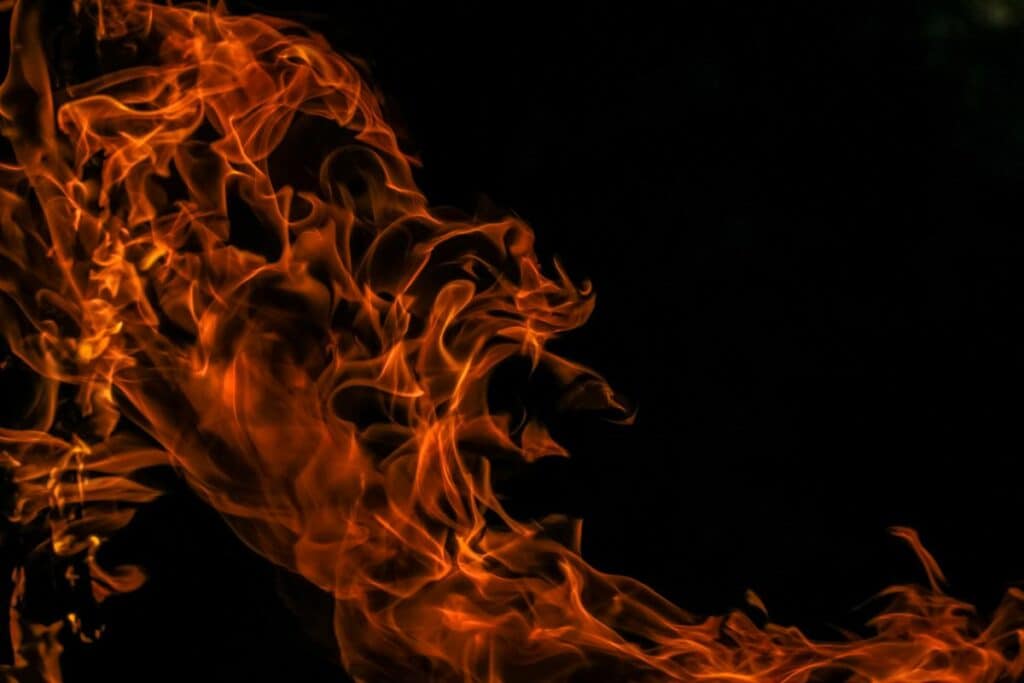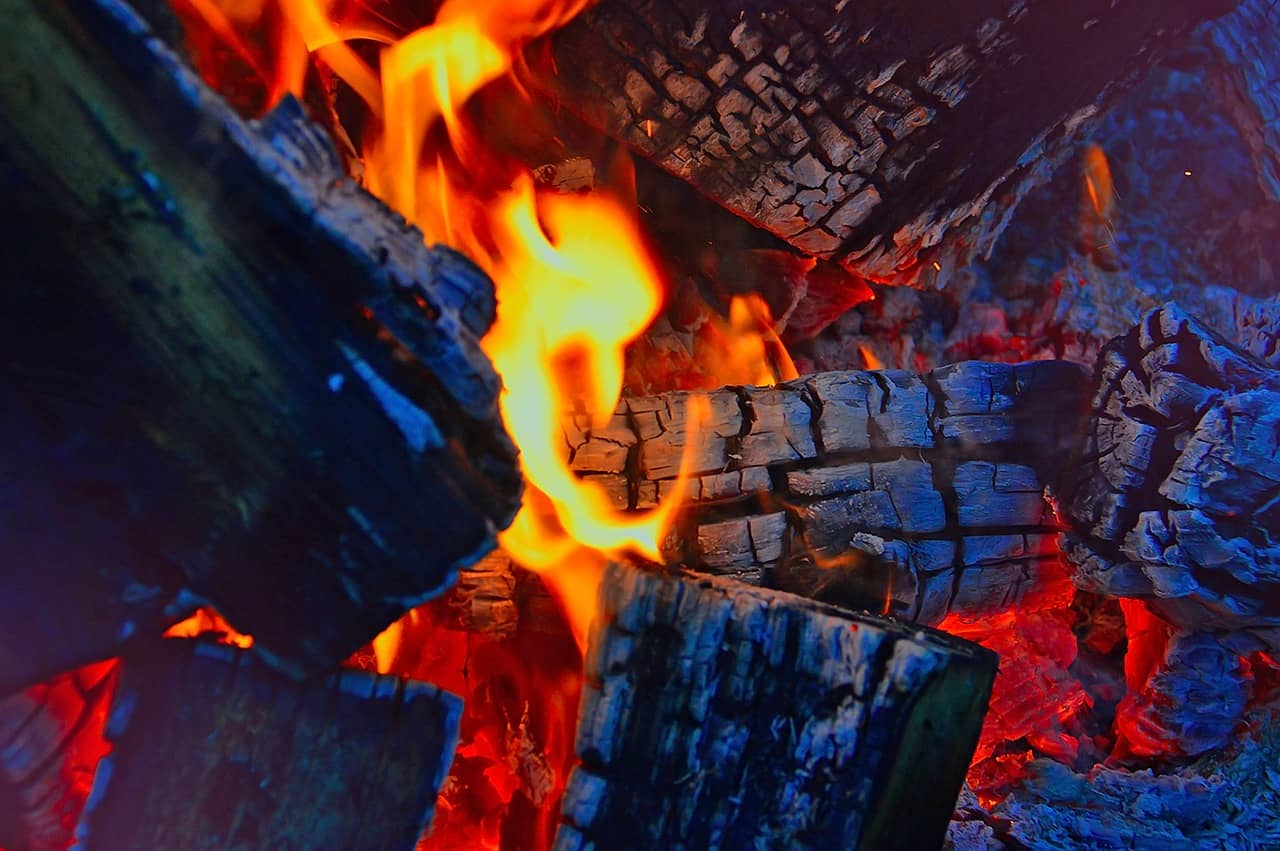Fire is an integral component of human existence. We use fire to keep warm, cook, and for light, and it is a major component in many industrial processes. Thus, everybody all around the world is familiar with fire. So, does fire have mass?
Whether fire has mass depends on its definition, and it has several. If we define fire as a mixture of hot gases, it has mass. However, if we define fire as a set of electromagnetic radiations, more specifically, light and heat, it does not have mass.
Gases are among the three states of matter, and as per chemistry, all matter occupies space and has mass.
Therefore, it is safe to deduce that it is pretty inconclusive whether the fire has mass. Many opinions depend on what fire is and what it is made of. So, before we dive into whether the fire has mass, it is imperative to know what fire is.

What Is Fire?
There are several ways to define fire. One of the simplest definitions of fire taught in schools is that fire is a mixture of hot gases.
While this is a shallow definition, it is true. Oxygen must be present for fire to burn, and it mixes with carbon in the air to form carbon (IV) oxide.
A more comprehensive definition of fire is that it is a ‘substance’ made up of light and heat. The definition is also true because fire emits blue or yellow, or red light, and it is hot. As such, fire is made up of electromagnetic properties.
A more in-depth definition of fire refutes that fire is a substance but a process instead. It is a chemical reaction between atoms that occurs when fuel such as wood, gas, or paper comes into contact with oxygen at a high temperature to produce light, heat, and other gases.
For the process of fire to take place, the properties that must be present include fuel, oxygen, high temperature, and a self-sustaining chemical reaction. These properties are collectively referred to as “the fire tetrahedron.”
A while back, before science disputed it, the fire was considered the fourth state of matter alongside liquids, solids, and gases. However, fire does not have a specific set of properties like mass, temperature, or density, so it does not qualify as a state of matter.
Here’s a video giving a better glimpse about fire and its components:
Does Fire Have Mass?
This question has brewed discussions for a while, with different people having different opinions. Fortunately, the views are backed by scientific reasoning. So far, there is no agreement as to whether the fire has mass or not – some theories support that fire has mass, and others refute that.
One approach to answering the question follows the law of conservation of mass. According to this law, the matter is neither created nor destroyed in a chemical reaction. Therefore, mass remains the same before and after the reaction.
So, when the fire burns, the products retain the mass of the fire’s components before the process. When fuel – gas/wood/paper- combines with oxygen, it changes into soot and gases.
The mass of the gases produced and the soot would equal the fuel and oxygen used for the burning process. This approach suggests that fire has mass.
The only loophole with this approach is that it would be hard to experiment and measure the mass of the gases before and after the process.
If we define fire as a reaction between material and heat, then the burning material bit has mass, but the heat bit does not. The material, in this case, is the fuel, and the gas it burns into will also have mass.
However, the fire itself, which is in electromagnetic waves in the form of infrared waves, will have no mass. In addition, the fact that fire itself is not a substance but a process means that it cannot have mass.
The definition of fire as light and heat means it is made of electromagnetic waves. Supposedly, electromagnetic waves have no mass, but Einstein’s law of relativity refutes that.
The law states that energy is equal to mass multiplied by the square of the speed of light, E=mC2. Light and heat waves are made up of photons, which have zero mass in their resting position.
Still, photons have energy, and energy is equal to mass. According to the law of relativity, when a photon gains speed equal to the speed of light, it acquires mass. Using this line of reasoning, then fire has mass.
Another approach to determining if the fire has mass is the comparison between the density of fire against the density of the air around it. Naturally, the hotter something is, the less its density. So, fire has less density compared to colder air around it, which explains why flames rise.
The density of gas in a flame is a quarter of the density of air. Air weighs 1.3 kg per cubic meter at sea level, so the fire will weigh approximately 0.3 kg per cubic meter.
With these measurements, you can easily find the mass of fire if you can determine its volume.
What Gives Something Mass?
Mass is defined as the quantity of matter in a body. It is made up of building blocks that cannot be broken down into smaller units. These building blocks include protons, electrons, and neutrons.
Neutrons and protons get mass from the strong nuclear force of an atom and are heavier than electrons. These building blocks move at very high speeds and are bound in place by strong particles called gluons.
The energy that comes from the interaction between the particles and gluons gives protons and neutrons mass. This is in the spirit of the law of relativity which equates mass to energy.
What Is the Weight of Fire?
Weight is the “action of mass under gravity,” and it is obtained by multiplying the mass of an object by gravity, W= mg. The weight of fire depends on your approach concerning whether the fire has mass or not.
By the definition that fire is just a process, or that it is made up of light and heat, then it has no mass. Subsequently, the weight of the fire will be zero.
If you follow the law of conservation of mass or the law of relativity, then it is likely that fire will have mass. So, if the mass of fire is 5kg, then its weight will be 50 Newtons, considering that gravity on earth is 10m/s2.
Does Fire Have Shadow?
A shadow forms whenever the light is blocked or redirected by an object. In essence, it is the absence of light.
Fires produce and emit light, and therefore, it is almost impossible for them to cast shadows. It is the same way the sun does not produce shadows. The only instance where fire would form a shadow is if the light beam hitting it is brighter than the light produced by the fire.
This is a rare case, though, as fire will outpower the incoming light most of the time, and no shadow will form at all.
Final Thoughts
The question as to whether the fire has mass has been a point of discussion for years. There are several definitions of fire, each of which can be used to establish if the fire has mass.
Generally, there is no unanimous agreement to put the matter to rest, so at best, there are running theories backed with scientific explanations. In other words, it is inconclusive whether the fire has mass.





